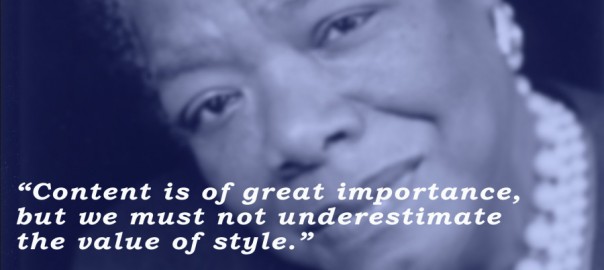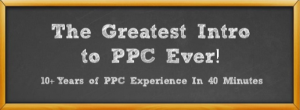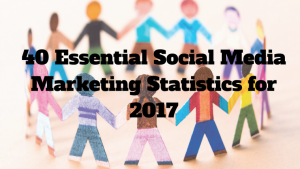When I wrote 7 tips to become an expert SEO in 2015 last year, I didn’t expect it going viral and turning a very popular content piece on Business2Community. The response to the post endorsed one key assumption that despite all hue and cry, marketers still believe in the power of SEO and aspire to learn new ways to improve their efforts. Having said that, much has changed since April 2015 and a lot of new trends and best practices have made their ways in. From Google’s mobile algorithm to emergence of design as equally important element (like content), there’s much more to discuss and talk about.
In this post, we’ll explore if anything has changed in the basic rules or not. I’ve listed 5 key tips that should help you attain better ROI on your search marketing campaigns in 2016.
1. Pay Attention to Your Content Size:
Quality content has always been the central point of SEO. However, one thing has recently made its ways into the search circles and that is ‘content size’. Latest trends suggest that longer blog posts (between 1,000 to 1,500 words) perform much better in search as compared to shorter ones. A couple of years ago, a 300 words article would have served the purpose but that is not the case today. Longer articles get more traffic and receive better search rank particularly for competitive queries.
Why Is That So?
“Popularity of longer articles and content pieces is linked to the changes in search philosophy at Google”; says Victor Smushkevich, who is CEO of Smart Street Media; a Los Angeles based SEO consultancy firm. He is of the view that Google is making these changes to enrich ‘search experience of the visitors’. “Every change by Google is focused on ensuring that when people find something through Google search, they see what they’re looking for, and they receive the right experience not only at Google but on the pages/blogs and sites it shows them.”
SEOs should work on long-form of content with subheadings, bullet notes, and relevant images to make the post comprehensive coverage of the topic.

2. Fall in Love with the Queen:
Yeah that’s right. You’ve to fall in love with Queen of SEO that is ‘design’. If you ask me about the single most important factor after content, it’s surely going to be design. If you don’t buy my argument, go through the ranking factors survey by Moz and you’ll notice a large number of factors being related to design, structure and architecture.
Another key element in design is of responsiveness. If you’re a good webmaster or SEO, you must have ensured this after last year’s mobile algorithm release. However, I came across few people (at a seminar) who said they aren’t looking for mobile traffic as their product is made for desktop. This was the most stupid argument I had ever heard. Remember, whether you sell something for mobile or desktop or nothing for both; you’ve to ensure mobile presence.
In May 2015 Google had confirmed that mobile search has surpassed desktop, which indicates a shift in search behavior of the people. Therefore, if you’ve to sell a product, service, or idea; make sure it reaches mobile.
3. Never Ignore the Power of Images:
In the point number 1, I had mentioned the importance of content size and break-down of your pieces with subheadings. One key element in the same is using the power of images to ensure that your coverage has a visual aspect too. Images can optimize your SEO performance in two ways. Number one, they can add aesthetic appeal to your content and increase users engagement and interest. Second element is index; since Google indexes images separately, a good quality image (with alt texts etc.) will get you higher rank in image searches. Images also have a great link with social media (thanks to Pinterest/Instagram etc.) and can work as a bridge to integrate your SEO and social media results.
So, images can help you increase your SEO ROI. Just make sure your images contain the required tags and are readable by search bot. Here’s is a very good article explaining how to use optimize images for SEO.
4. Focus on Link Earning and Structure:
They say; SEO is all about quality content, design and good links which is quite true. However, just like other SEO elements, link building has also evolved and embraced some changes. Earning quality and relevant links still matters for higher ranks; however, the structure of internal links equally matters. Since 2014, the number of (high performing) internal links has increased indicating their importance.
Jayson DeMers writes that: “What counts is not the total number of internal links, but rather the optimization of the internal structure and page information so that the user (and also the search engine) is optimally guided through the provider’s content and to ensure that the user stays on the page and is satisfied.” Therefore pay equal attention to both elements.
5. Avoid Strategy Trap:
The last but not the least is to avoid ‘strategy trap’. By strategy trap I mean paying attention to the fancy jargons and most talked about stuff only. There are folks who want to get SEO juices via content, link building and sharing while totally ignoring the technical aspects of their website or the landing pages. There are three key technical elements in your website that matter a lot in search ranking.
Load time, content structure, and internal linking are those key technical areas that should be on your radar while doing search engine optimization in 2016. Google Speed Insight, Google Developers, and other online solutions can help you manage these areas effectively.
Finally, one cannot pick one just one list of elements and declare them the only panacea for all SEO ROI problems. However, if we pick up a few fundamental elements (like we did in the post) and think strategically around then, our search performance can be lot better. Concluding my piece, I would like to remind you about the importance of design, content size, technicalities of the website, quality links, internal link structure and mobile friendliness. If you have any thoughts or questions on the subject, write in the comment box below.
Digital & Social Articles on Business 2 Community(38)







